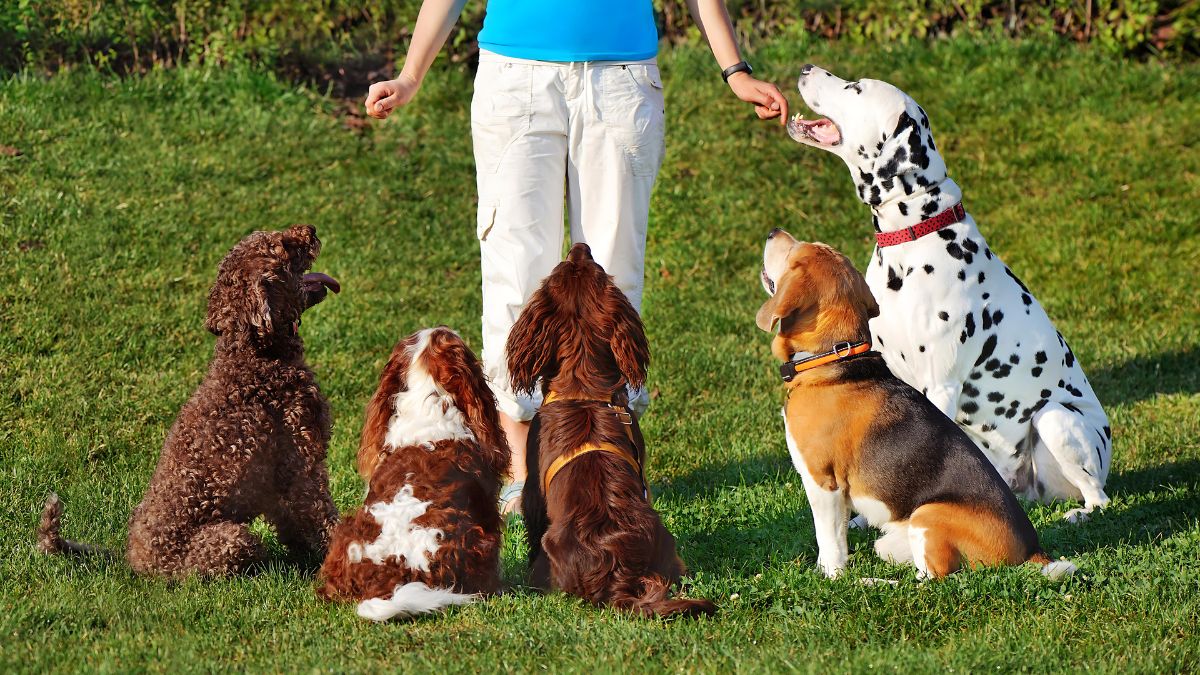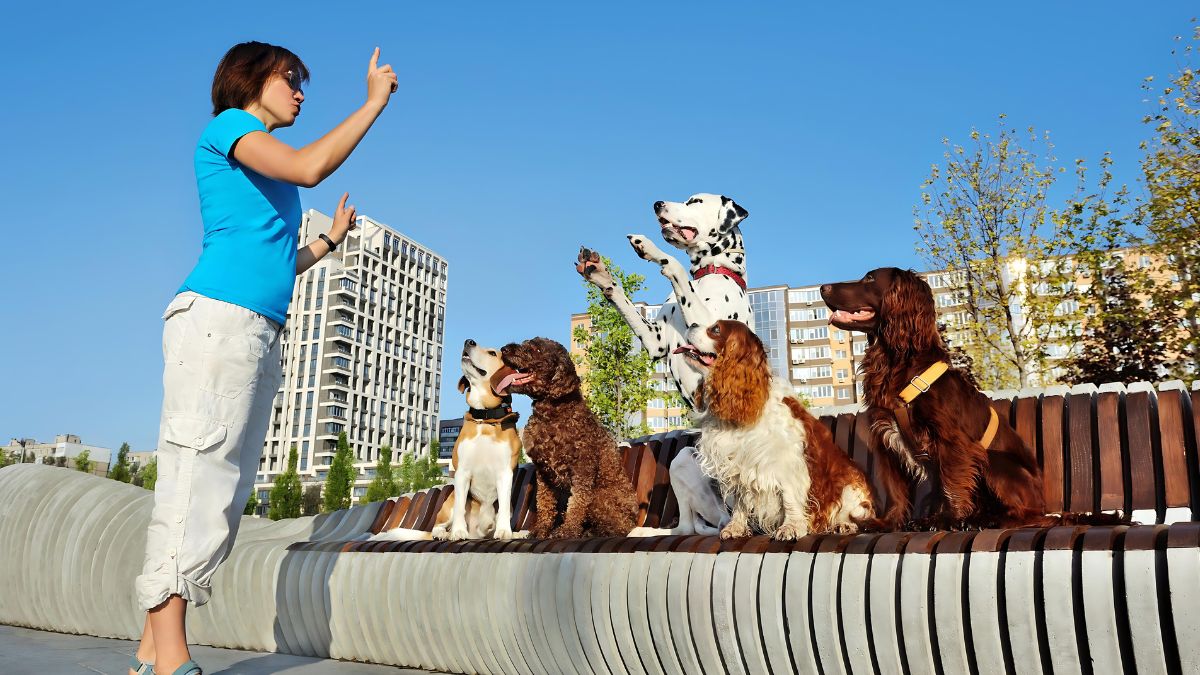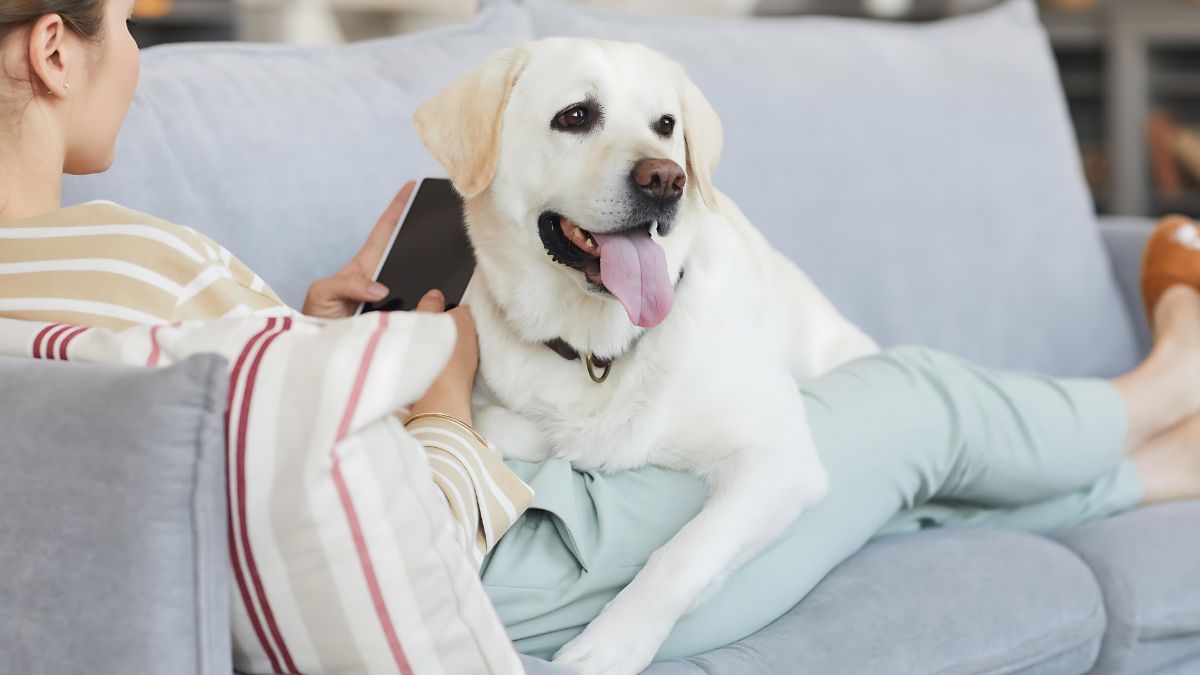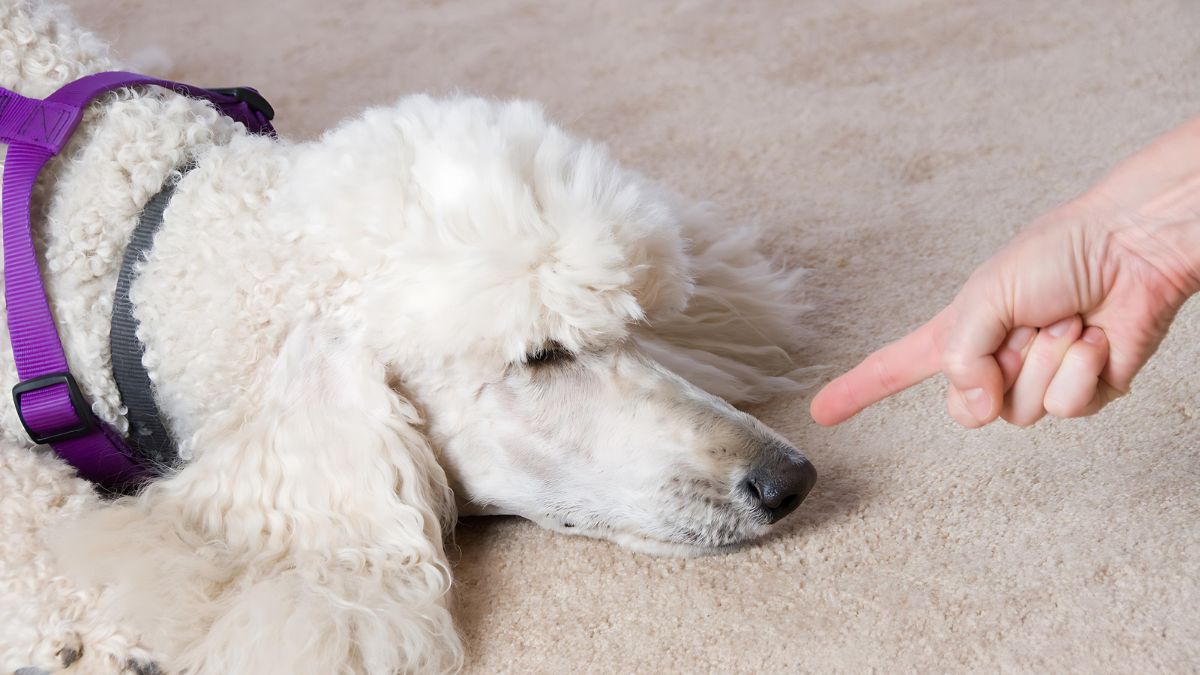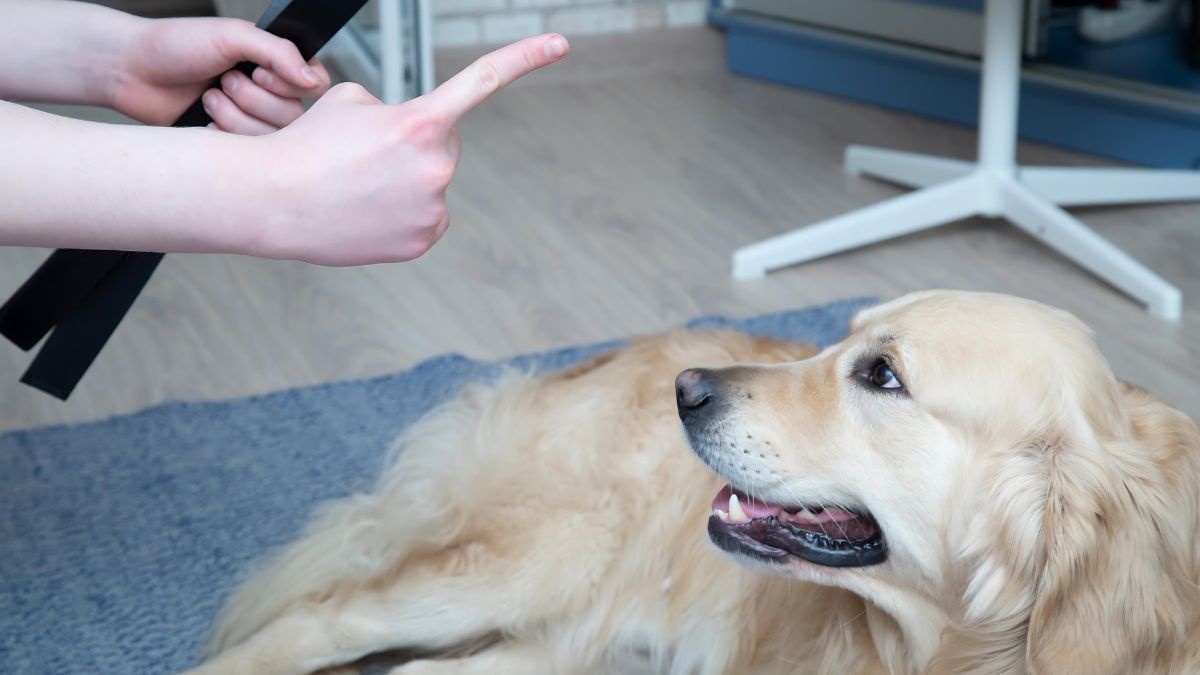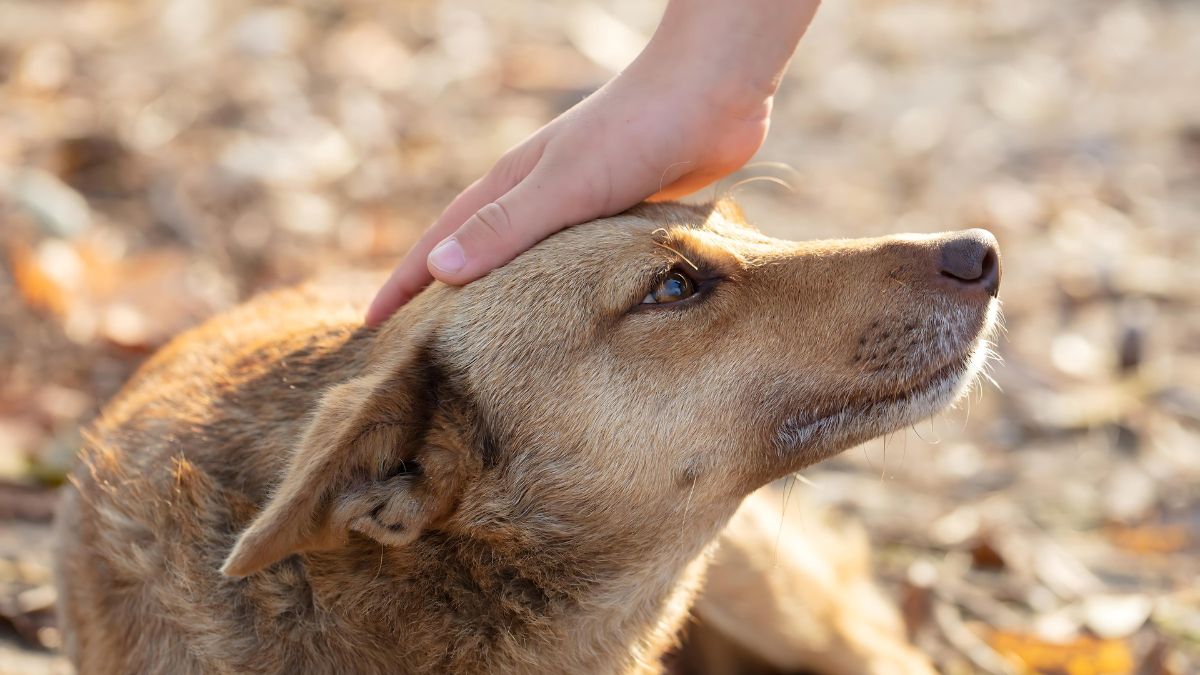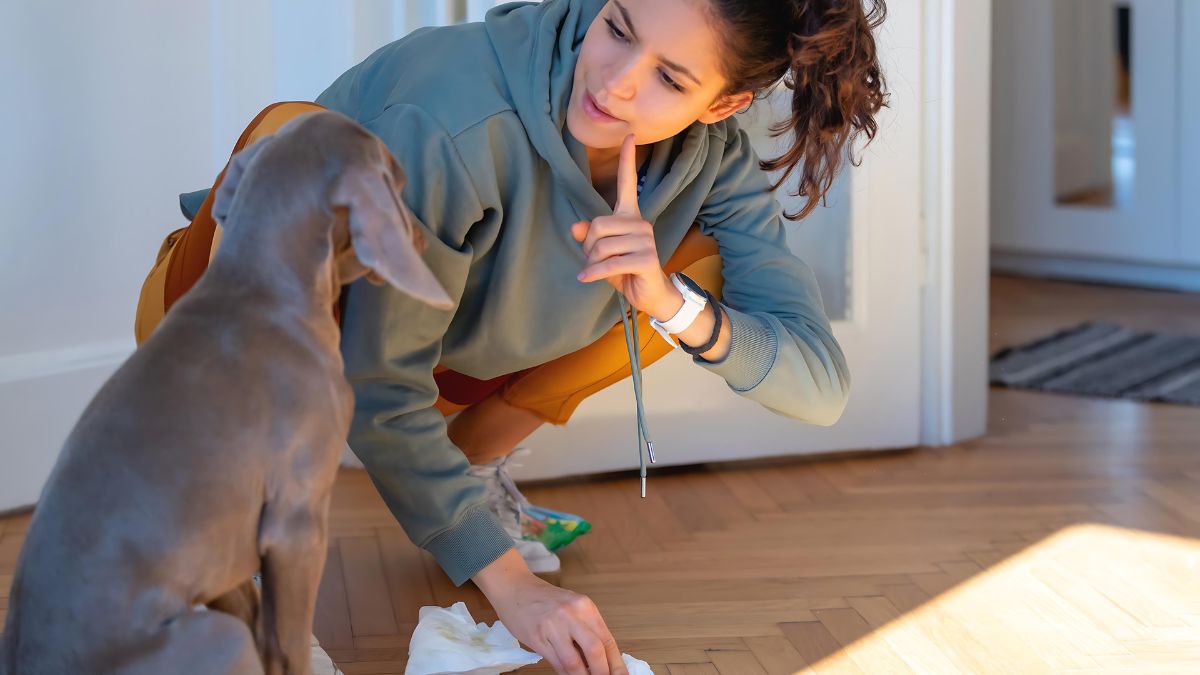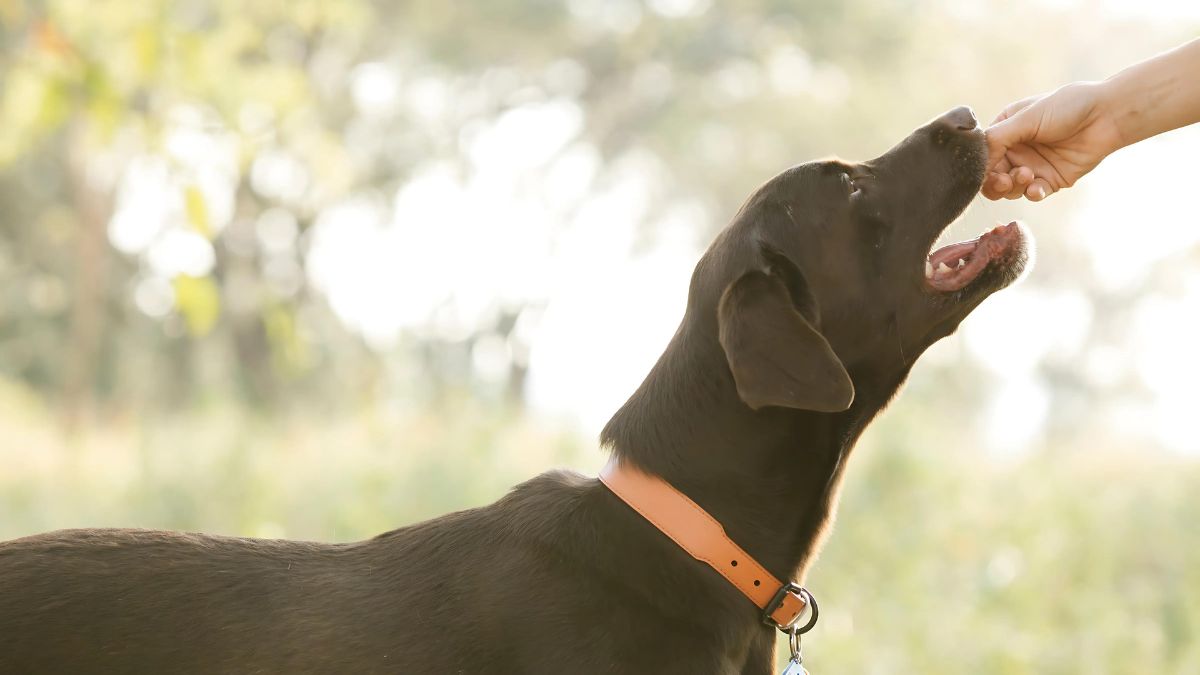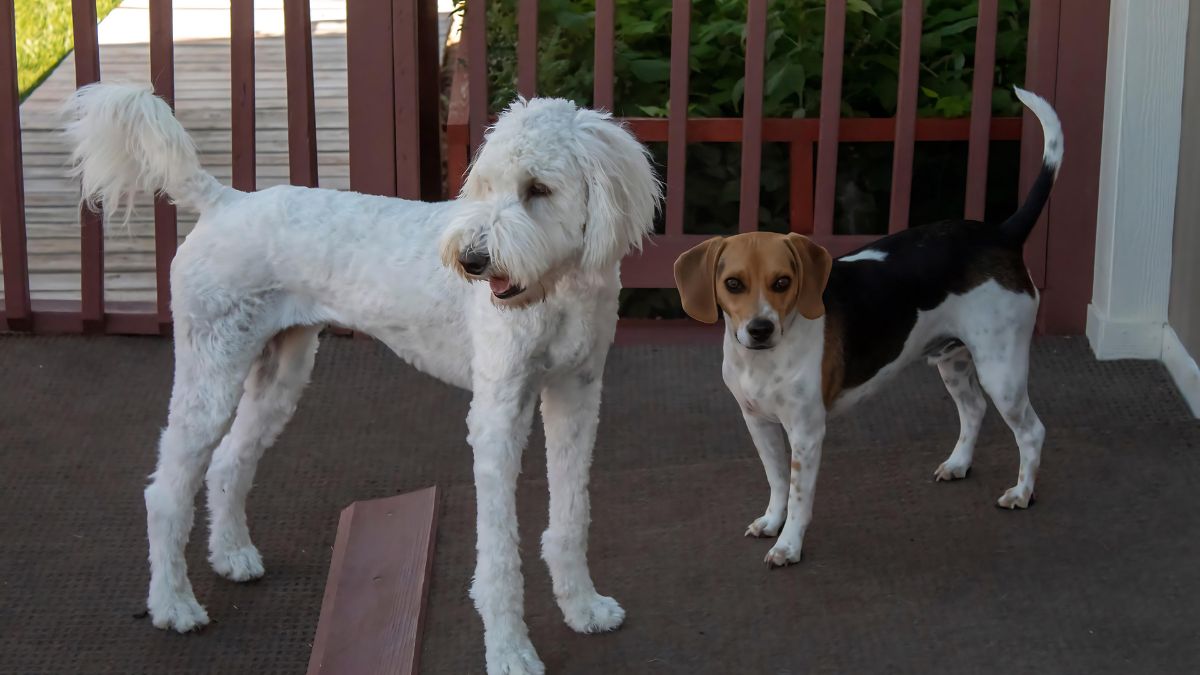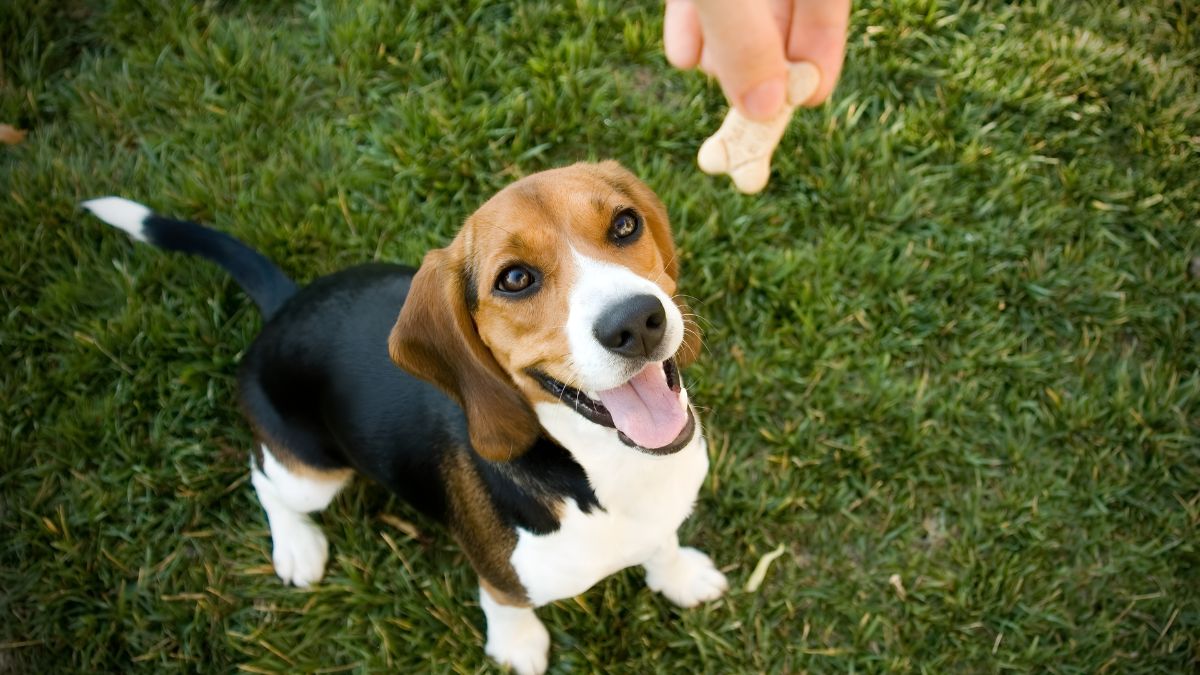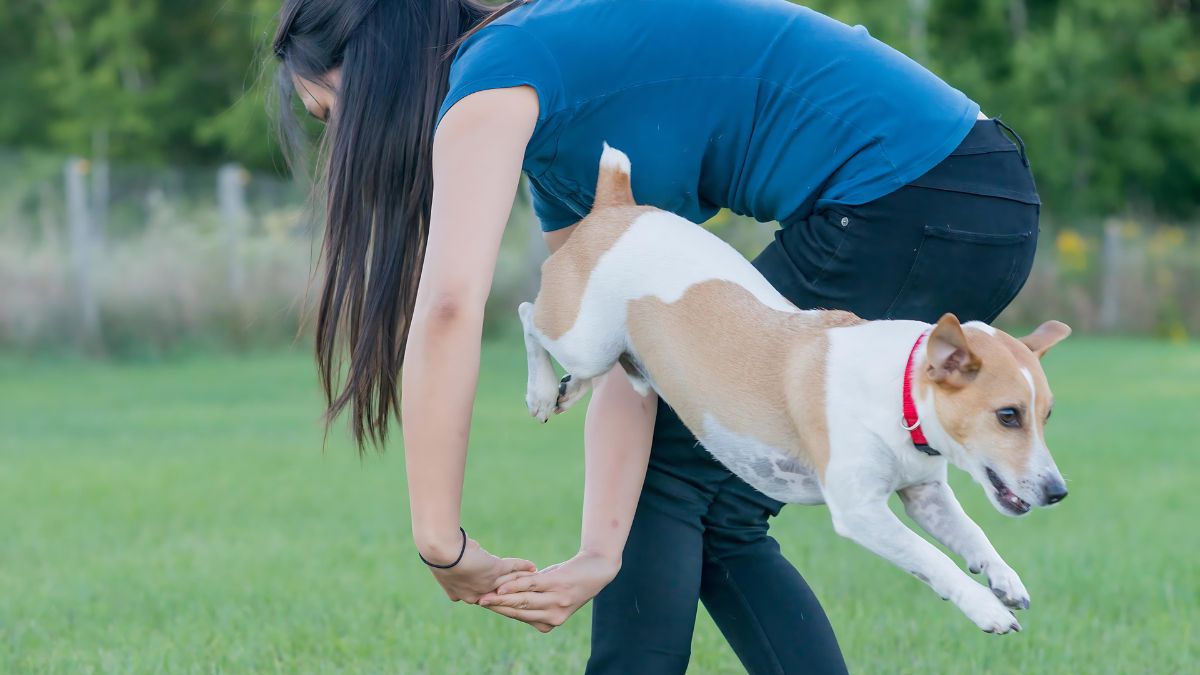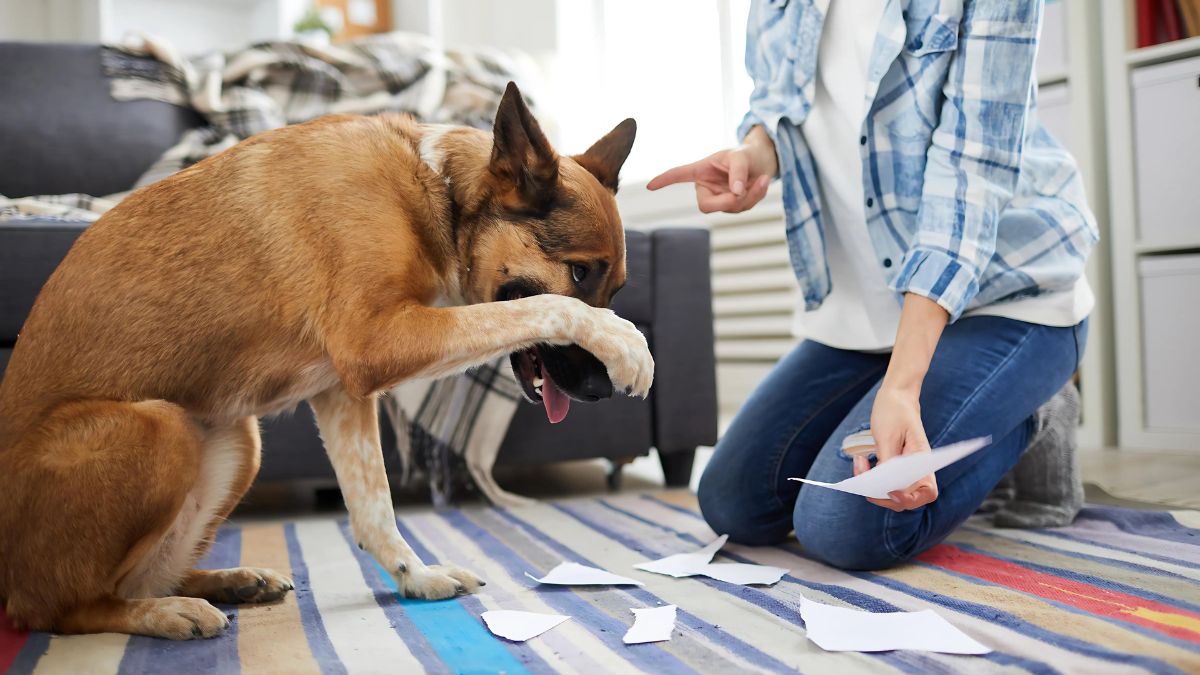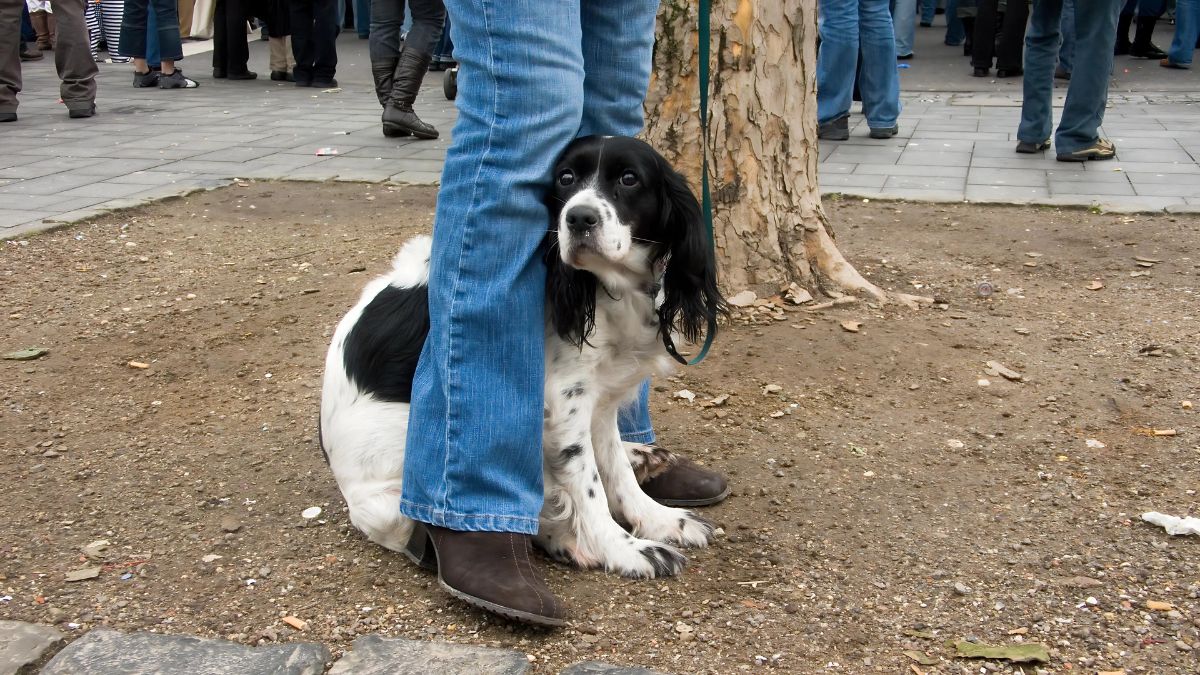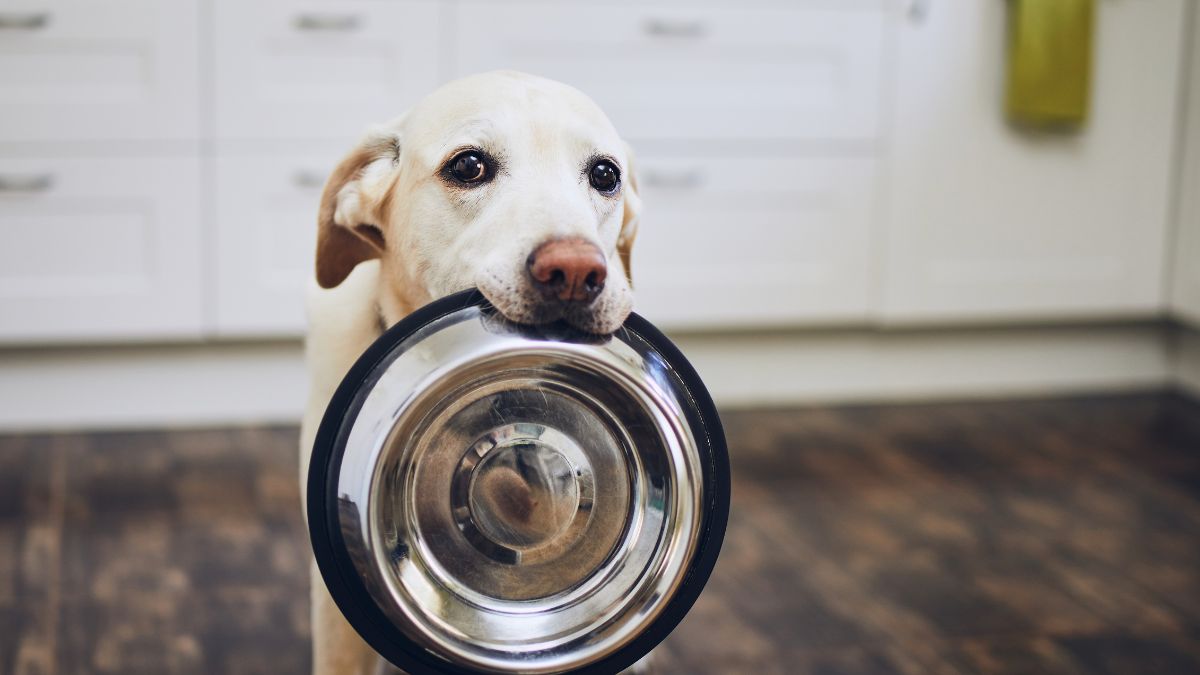Teaching a dog good behavior and a few tricks isn’t easy. Each lesson will come with challenges you and your dog will face. However, understanding these challenges and identifying the mistakes is a great step in improving the bond between us and our pets. In this listicle, we will take a look at some of the mistakes we make when trying to train our dogs and how to deal with them. With all that out of the way, let’s jump in.
15. Waiting Too Long To Socialize
Some people don’t let their dogs experience new things for fear of their pets getting hurt. But in truth, this will be a setback in the long run. The prime socialization period for dogs is from 3 to 14 weeks and is a good time to expose him to new people, sounds, and animals, or to train him in obedience school.
Solution: Start his training. You can build up his confidence if you expose him slowly to people, places, animals, and so on.
14. Not Training Enough
Another mistake that pet guardians make is training their dogs about once or twice a week. They think that a lengthy training session is enough for dogs to learn how to behave and do tricks. Unfortunately, this is not the case for our canine companions.
Solution: Like humans, dogs need time to absorb all the skills and correct behavior that are being taught to them. We need to train them every single day for the lesson to sink in. Remember 5 minutes of training every day is better than 15+ minutes once or twice a week. If it helps you can set a reminder on your phone to be consistent with your dog’s training.
13. Thinking One Approach Is Right For Every Dog
We all assume at one point that all dogs can follow the same skill set as other dogs, but this is where we make the mistake. Individual dogs will react to things in a different manner, and we can’t say that one way will work for all dogs.
Solution: Try different approaches until you find what’s best for your pet. There is no straight path when it comes to learning and your dog will react based on his unique personality. So be patient and look for ways that your dog can learn new things while having fun with you.
12. Inconsistency
Being consistent in all things isn’t as simple as it might sound. Think about it for a second. When your dog barks there are times that you just allow them to continue without fuss and there are times that we call them out because it seems too much. When that happens your dog will get mixed signals and will be confused as to what we expect out of them
Solution: Set ground rules for everyone in the house to react the same way if your dog does something. To make it simple reward good behavior and call out bad behavior. For example, When you put your dog on a leash for a stroll and he starts barking, stand still until he calms down, and then you can start the walk.
11. Being Impatient With Your Dog’s Aggression
Sometimes our dogs behave like they’re puppies again and we get frustrated with them in return. But this is the wrong reaction to have. Dogs are like children and they need a constant reminder and a lot of patience to learn how to behave properly.
Solution: Always have your emotions in check and have a little more patience. When you always act angry or frustrated your dog will grow up being afraid or anxious around you. If your dog starts to misbehave call them out calmly and repeatedly if needed until they behave the way you expect them.
10. Harsh Discipline
Using brute force, physical punishments, and dominance to get your dog to behave won’t get your dog to behave the way you want. This often results in fear, anxiety, aggression, and biting from your dog.
Solution: Positive reinforcement training is the way to go. Rewarding good behavior and calmly correcting bad behavior will show your dog you are in control. This will also result in your dog building trust in you because you don’t have to hurt or humiliate them when they make a mistake.
9. Wrong Timing With Rewards And Praises
Rewarding your dog too early or too late will cause your dog to rush his tasks and leave it incomplete or choose not to do any trick at all because there’s no positive feedback from you.
Solution: If your dog does your command the right way you have to reward him instantly. This will reinforce positive behavior and they will understand exactly what you commanded.
8. Using Your Dog’s Name In A Negative Way
Shouting, screaming, and using your dog’s name as part of a punishment is not a good way to make your dog respond to you. This will encourage stubborn behavior and he will be wary of the punishment waiting for him.
Solution: Always use your dog’s name as a part of his reward. For example, if you’re training him to do the “wait” trick and he does it perfectly, call his name and say “come” followed by praises. For instance say, “Spotty, come! Good Boy!”. In this way, your dog will associate his name with positive things and will follow your command.
7. Rewarding Negative Behavior
Giving your dog attention when he acts up is a mistake most of us have made before. For example, when he barks and you call out his name to make him stop, you’ve already rewarded his negative behavior.
Solution: Redirect your dog’s attention and then reward him for his good deed. For example, when he barks and you want him to stop, grab a treat and command him to sit down. When he is successful in following your command you can reward him for doing the trick and for stopping the barking.
6. Not Proofing A Behavior Or Skill
If you think your dog will behave outdoors because he does inside your home then you’re mistaken. Your pet will behave differently when an outside factor is introduced. Like when you’re playing fetch and another dog walks by his attention will be diverted to the dog.
Solution: This is the perfect case of practice makes perfect. When your dog has mastered a certain behavior while learning new tricks, try to introduce certain distractions and reward him if he follows through or call him out if he gets distracted. Do this repeatedly until you can go outside and practice. Raise the difficulty gradually by adding new distractions to see if he will still complete his task and reward him if he does.
5. Bribing Instead Of Training
As your dog learns new tricks you will want to decrease the treats he gets. This will encourage him to behave even when there is no command or reward involved.
Solution: When your canine companion is younger always reward him a treat in exchange for 1 trick. As he grows older you can lessen that amount by doing 2 or 3 tricks for 1 treat. Eventually, he can cycle through all the commands you’ve taught him with only a single treat.
Note that you should always reward your dog when he is successful in following your commands.
RELATED: 12 Dog Toys That Could Be Putting Your Dog’s Life At Risk
4. Getting Ahead Of Yourself And Your Dog
Trying to do complicated tricks too fast with our pups and then getting angry when they can’t understand what we’re making them do is a mistake we make that often goes unnoticed.
Solution: Always go for the most simple tricks first and review them with your dog regularly. You can’t make your dog lay down if he doesn’t know the “sit” trick first right? Doing the basics frequently and then adding the complicated tricks one by one will ensure that your dog understands every command and will enhance his ability to follow through with minimal failures.
3. Yelling At Your Dog
Yelling at the dog when he gets distracted or when he fails to respond to us is one of the most common mistakes we make in training.
Solution: Try to keep an even tone and temper when you have your training sessions. Doing so will keep your training positive and enjoyable for your pet. He can’t follow your requests he’s afraid or if he doesn’t understand what you’re saying when you’re screaming.
2. Being Unaware Of Fear And Anxiety Signals
Dogs are expressive creatures and will show signs when they are afraid or anxious with you. They lower their heads, hide their tails, and drop their ears as a signal to you that they feel fear. And when you force them to do things when they’re in that state can lead to aggression and biting.
Solution: Always use positive reinforcement methods for your training sessions. That way your dog won’t act afraid when he’s near you. For example, don’t spank him when he makes a mistake, or use a harness instead of a choking collar for walks.
RELATED: 10 Deadly Diseases Your Dog Can Catch From Other Dogs
1. Leaving Food Within Reach
Leaving food within your dog’s reach is the most common mistake we make as dog parents. Our pets don’t know what not to eat or chew naturally and we have to teach them that lesson. If you expect your dog not to go through the trash or go inside cabinets to look for food then we have failed to control their environment.
Solution: Dog-proof your home first before getting a puppy. In this way, we can avoid mishaps, like your dog going through the trash, finishing a week’s supply of dog food in a day, or chewing your shoes. All animals have an instinct to eat as much as they can because they don’t know when the next meal is coming. This is also present in dogs and we can control that by keeping supplies out of their reach.
From The Club
It’s always a good idea to train your dog on how they should act around us and what tricks they should know. But it’s also good to look at ourselves and how we treat our dogs when we teach them. By adjusting our behavior and improving our methods will we gain our pet’s trust and respect.


